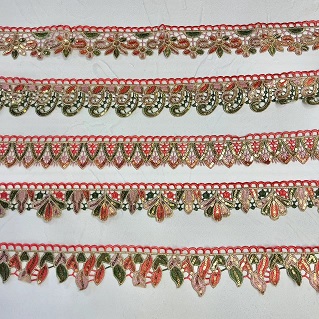How to Make Your Own Lace and Embroidery: A Step-by-Step Guide
2025-03-07
Lace and embroidery are timeless textile arts that add beauty and elegance to fabric. Whether you want to create delicate lace patterns or embellish fabrics with intricate embroidery, both crafts require patience, creativity, and practice. In this guide, we will walk you through the basics of making your own lace and embroidery, including materials, techniques, and expert tips.
Part 1: How to Make Lace
1. Choose Your Lace-Making Method
There are several ways to make lace, including:
- Bobbin Lace – Uses threads wound on bobbins and woven over a pillow with pins.
- Needle Lace – Created using a needle and thread, similar to embroidery.
- Crochet Lace – Made with a crochet hook, often used for doilies and trims.
- Tatting – Uses a shuttle or needle to create knotted lace patterns.
2. Gather Your Materials
Depending on your chosen lace-making method, you’ll need:
- Fine cotton, silk, or nylon threads
- Bobbins, needles, or crochet hooks
- Lace-making pillow (for bobbin lace)
- Pattern templates (for needle and bobbin lace)
3. Follow a Pattern or Design Your Own
- Beginners can start with simple geometric patterns.
- Mark the design on fabric or use printed lace patterns as a guide.
4. Practice Basic Stitches and Techniques
- Buttonhole Stitch – Used in needle lace to create secure loops.
- Picots – Small decorative loops common in tatting and bobbin lace.
- Chains and Rings – Found in crochet and tatting lace.
5. Finish and Preserve Your Lace
- Gently wash and block your lace to maintain its shape.
- Store in a dry place to prevent damage.

Part 2: How to Embroider Like a Pro
1. Choose an Embroidery Style
- Hand Embroidery – Traditional method using a needle and thread.
- Machine Embroidery – Done with computerized embroidery machines.
- Cross-Stitch & Crewel Work – Popular hand-stitched techniques.
2. Gather Your Materials
- Embroidery hoop – Keeps fabric taut.
- Embroidery floss or thread – Cotton, silk, or metallic.
- Fabric – Linen, cotton, or felt for different effects.
- Needles – Choose the right size for your fabric.
3. Transfer Your Design
- Tracing – Draw your design directly onto fabric.
- Heat Transfer Paper – Print and iron the pattern onto fabric.
- Water-Soluble Markers – Ideal for temporary markings.
4. Master Basic Embroidery Stitches
- Backstitch – Great for outlines.
- Satin Stitch – Fills in solid areas.
- French Knots – Adds texture and dimension.
- Lazy Daisy – Perfect for floral patterns.
5. Experiment with Colors and Textures
Mix different thread thicknesses and colors to create shading effects and depth.
6. Finishing Your Embroidery
- Trim excess threads neatly.
- Use an iron to gently remove wrinkles.
- Frame or sew your design onto garments, home décor, or accessories.
Making your own lace and embroidery is a rewarding craft that allows you to personalize fabric with intricate details. Whether you're creating delicate lace trims or embroidered patterns, mastering these techniques will help you bring creativity to life in your projects.
Would you like recommendations for patterns or materials to start with? Let me know!


